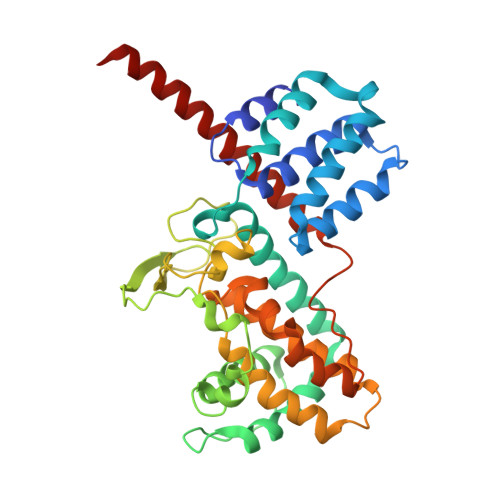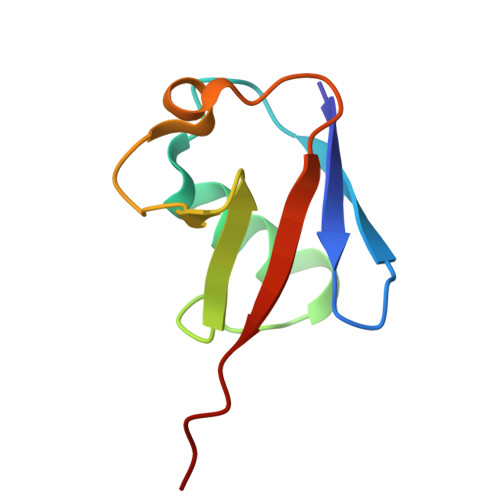Structure and mechanism of an actin-dependent bacterial phosphoryl AMPylase.
Chen, T.T., Lu, Q., Zheng, S.R., Fu, J., Chen, J., Kang, L., Wu, J., Luo, J., Tong, J., Li, S., Li, X., Li, S., Li, J., Wang, S., Feng, Y., Luo, Z.Q., Ouyang, S.(2025) Nat Chem Biol
- PubMed: 40588486
- DOI: https://doi.org/10.1038/s41589-025-01945-w
- Primary Citation of Related Structures:
8K6F, 8K6I, 8K6R, 8K6V - PubMed Abstract:
The two effectors LnaB and MavL of Legionella pneumophila coordinate the conversion of phosphoribosyl ubiquitin (PR-Ub) released by reversal of ubiquitination induced by members of the SidE effector family into functional Ub. LnaB acts as an actin-dependent phosphoryl AMPylase that converts PR-Ub into ADP-ribosylated (ADPR)-Ub. Catalysis by LnaB requires the conserved SHE motif present in a large family of bacterial toxins. Here we describe a series of structures of LnaB in complex with the cofactor actin and the substrate PR-Ub and ATP. LnaB harbors both adenylyltransferase and ATPase activities, which reveal an adenylylation mechanism involved in a two-step catalytic process. Actin performs a unique activation mechanism that promotes the recruitment of PR-Ub by LnaB to activate LnaB's ATPase activity through interacting with LnaB and PR-Ub. Mechanisms derived from this series of structures covering the process of LnaB action establish an important biochemical basis for protein AMPylation.
Organizational Affiliation:
Key Laboratory of Microbial Pathogenesis and Interventions of Fujian Province University, Key Laboratory of Innate Immune Biology of Fujian Province, Biomedical Research Center of South China, College of Life Sciences, Fujian Normal University, Fuzhou, China.




















